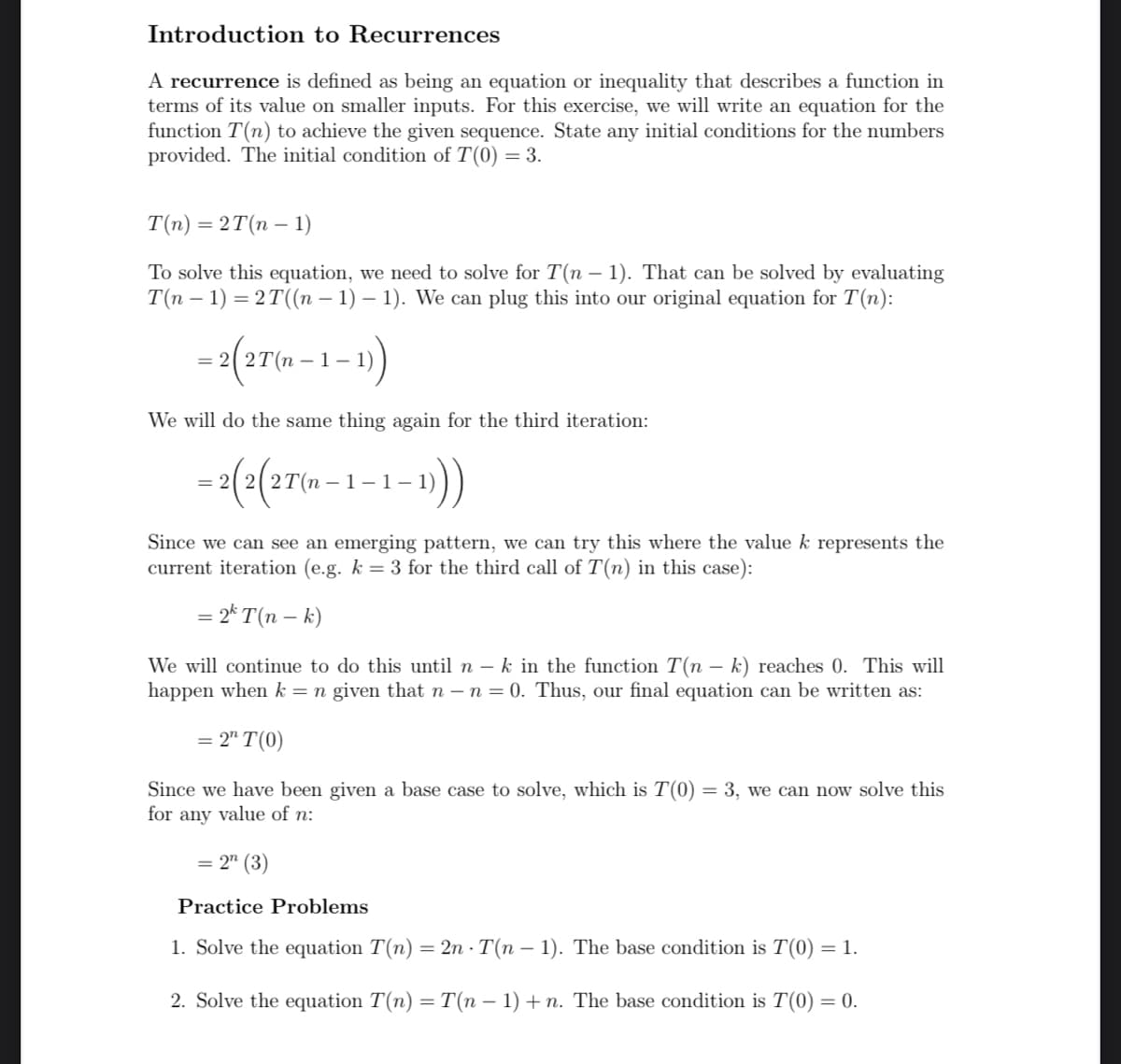2. Solve the equation T(n) = T(n-1) + n. The base condition is T(0) = 0.
Operations Research : Applications and Algorithms
4th Edition
ISBN:9780534380588
Author:Wayne L. Winston
Publisher:Wayne L. Winston
Chapter20: Queuing Theory
Section20.4: The M/m/1/gd/∞/∞ Queuing System And The Queuing Formula L = Λw
Problem 14P
Related questions
Question
Please help me with Question 2. Please provide a step-by-step explanation of the solution as I am really struggling with this.

Transcribed Image Text:Introduction to Recurrences
A recurrence is defined as being an equation or inequality that describes a function in
terms of its value on smaller inputs. For this exercise, we will write an equation for the
function T(n) to achieve the given sequence. State any initial conditions for the numbers
provided. The initial condition of T(0) = 3.
T(n) = 2T(n − 1)
To solve this equation, we need to solve for T(n − 1). That can be solved by evaluating
T(n − 1) = 2T ((n − 1) − 1). We can plug this into our original equation for T(n):
= 2(2T(n-1-1))
We will do the same thing again for the third iteration:
= 2(2(2T(n-1-1. -1)))
Since we can see an emerging pattern, we can try this where the value k represents the
current iteration (e.g. k = 3 for the third call of T(n) in this case):
= 2k T(n - k)
We will continue to do this until n - k in the function T(n - k) reaches 0. This will
happen when k = n given that n - n = 0. Thus, our final equation can be written as:
= 2" T(0)
Since we have been given a base case to solve, which is T(0) = 3, we can now solve this
for any value of n:
= 2n (3)
Practice Problems
1. Solve the equation T(n) = 2n - T(n − 1). The base condition is T(0) = 1.
2. Solve the equation T(n) = T(n − 1) + n. The base condition is T(0) = 0.
Expert Solution
This question has been solved!
Explore an expertly crafted, step-by-step solution for a thorough understanding of key concepts.
Step by step
Solved in 2 steps with 1 images

Knowledge Booster
Learn more about
Need a deep-dive on the concept behind this application? Look no further. Learn more about this topic, computer-science and related others by exploring similar questions and additional content below.Recommended textbooks for you

Operations Research : Applications and Algorithms
Computer Science
ISBN:
9780534380588
Author:
Wayne L. Winston
Publisher:
Brooks Cole

Operations Research : Applications and Algorithms
Computer Science
ISBN:
9780534380588
Author:
Wayne L. Winston
Publisher:
Brooks Cole